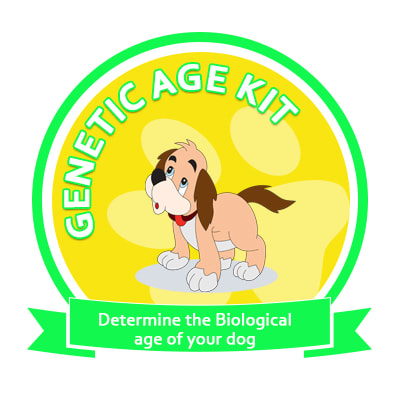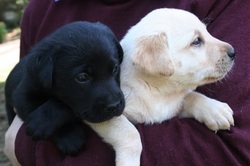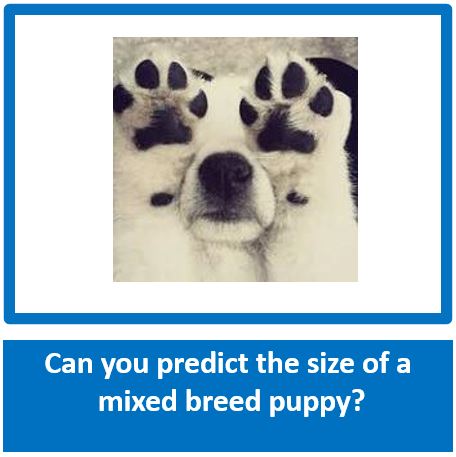The Labrador Retriever
by Ruth Bots
Vice Chairperson of the LRKC
/
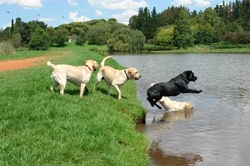
Personality
The Labrador Retriever has become one of the most popular breeds of dog in the world mainly because they are versatile “all-rounders”. Labs love to work and have proved their worth in many different fields.
Their sociable and friendly nature, lack of aggression, ease of trainability and natural abilities have made them the breed of choice for training as service dogs for search and rescue work, guide dogs for the blind and canine assistants to people with various disabilities.
Their soft mouth, stamina, courage and persistence make them perfect hunting companions and successful field trial competitors although they are best known as devoted family pets that are child friendly, generally get along well with most other animals and thrive as part of a family.
Where do I buy my Lab?
The popularity of the Lab has created a large market for the breed and opened money making opportunities for backyard and irresponsible breeders. Often these breeders exploit the public by breeding dogs without proper health and temperament checks; they exploit the dogs by breeding bitches at every season and discarding them when they become older or sick.
Guidelines on questions to ask yourself and the breeder before buying a puppy as well as a list of approved breeders can be found on www.labclub.org.za . Reputable breeders screen potential buyers to try and place puppies in homes best suited to the temperament of the puppy, the reasons why the buyer wants a puppy and the type of life the puppy will experience in its new home. An energetic puppy from a working bloodline will be better suited to an owner wanting a dog to accompany them on long walks or runs, or to train for field and working trial competitions; a steadier, gentle natured puppy would be better placed as a family pet. Prospective owners should try and visit the breeder to see the parents of the puppies and interact with their selected puppy before it is time to take them home at between six to eight weeks of age.
(from FOTD - please do read this article as well - Breeders - A Must Read - forewarned as to what to look for, is not only forewarned, it can save you, your family and the prospective dog so much heartache.)
The Labrador Retriever has become one of the most popular breeds of dog in the world mainly because they are versatile “all-rounders”. Labs love to work and have proved their worth in many different fields.
Their sociable and friendly nature, lack of aggression, ease of trainability and natural abilities have made them the breed of choice for training as service dogs for search and rescue work, guide dogs for the blind and canine assistants to people with various disabilities.
Their soft mouth, stamina, courage and persistence make them perfect hunting companions and successful field trial competitors although they are best known as devoted family pets that are child friendly, generally get along well with most other animals and thrive as part of a family.
Where do I buy my Lab?
The popularity of the Lab has created a large market for the breed and opened money making opportunities for backyard and irresponsible breeders. Often these breeders exploit the public by breeding dogs without proper health and temperament checks; they exploit the dogs by breeding bitches at every season and discarding them when they become older or sick.
Guidelines on questions to ask yourself and the breeder before buying a puppy as well as a list of approved breeders can be found on www.labclub.org.za . Reputable breeders screen potential buyers to try and place puppies in homes best suited to the temperament of the puppy, the reasons why the buyer wants a puppy and the type of life the puppy will experience in its new home. An energetic puppy from a working bloodline will be better suited to an owner wanting a dog to accompany them on long walks or runs, or to train for field and working trial competitions; a steadier, gentle natured puppy would be better placed as a family pet. Prospective owners should try and visit the breeder to see the parents of the puppies and interact with their selected puppy before it is time to take them home at between six to eight weeks of age.
(from FOTD - please do read this article as well - Breeders - A Must Read - forewarned as to what to look for, is not only forewarned, it can save you, your family and the prospective dog so much heartache.)
.
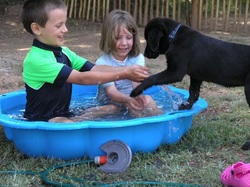
Is the Lab Right for me?
The qualities for which Labs are renowned sometimes result in problems in the home environment if care is not taken to understand the needs of the breed.
All puppies love to chew but Labs are retrievers, they enjoy having things in their mouth, so if they do not have access to appropriate chew toys or do not know how to use them, then anything lying around is fair game.
Labs have been bred to be sociable and need be around people and part of the family. They are energetic working dogs that need a certain amount of stimulation and exercise - bored Labs are very capable of inventing their own amusements such as digging up the flower beds or investigating the garbage bin.
Labs love ball games and sitting on the stoep throwing a ball for them to bring back to you can solve the exercise problem on occasions when you cannot manage regular walks or trips to the park.
Lab owners with swimming pools will testify that they love to swim even in winter, but a wet, muddy Lab running through the house can make frequent carpet cleaning a necessity. They do not require a lot of maintenance apart from normal bathing, teeth and ear cleaning routines, but they do shed and need regular brushing.
Although large dogs, Labs can adapt to city living in town houses with small gardens better than many smaller breeds providing that they have sufficient environmental stimulation and opportunities for exercise and play after which they are content to lie around and keep their family company.
Training
Like all puppies Labs need early puppy socialization to adapt to life in their new home environment but because they only become fully mature at about three years of age they need ongoing training to reach their full potential.
Prospective guide dogs for the blind are placed with puppy walkers and minders until they are around 18 months of age when they are assessed for suitability for specialised training and rehoming with a blind person.
Late maturity has disadvantages as a year old Lab with an almost full grown body but the energetic playful nature of a puppy can wreak havoc in homes if they have not had proper training and learned to respond to basic commands.
Young children can easily be overwhelmed or bowled over by an excited boisterous Lab who just wants to play. Obedience trainers are very used to the sight of owners with previously untrained adolescent or adult Labs sledding across the field behind their exuberant pets because these powerful dogs have learned that using their strength will get them where they want to go, which is usually not where the owner wanted to end up!
Training is a necessity for this lively breed to both increase the bond between dog and owner and ensure the development of a well-balanced adult dog.
Health Concerns
The most common hereditary diseases found in this generally very strong and healthy breed are elbow and hip dysplasia which result in arthritis and mobility problems and retinal atrophy a progressive disease leading to loss of vision.
Although there can be no guarantee that a dog will not develop any of these conditions, responsible breeders try to minimize the chances of these genetic conditions by screening their dogs before breeding with them and will supply certificates of the parents hip/elbow scores and eye test results to new puppy owners. You can see details of these tests and the scoring system on www.labclub.org.za.
Labs that swim frequently can be prone to ear infections; other common conditions found in the breed include allergies and epilepsy. Labs love to eat, which makes them really easy to train using positive reinforcement and reward based training but they can easily become obese unless their food intake is carefully monitored. As adults they do well being fed a good quality dry kibble twice a day to spread their energy intake and avoid problems with eating too much food too quickly.
History
Most accounts of the history of the Labrador Retriever breed trace its origins to Newfoundland and dogs such as the St. John’s water dog and various other hunting, guarding and retrieving dogs brought in with fishermen who later settled on the island. Many early settlers were from Devon in England, although fishing boats from other seafaring nations such as Spain and Portugal also fished the coast with their canine crew.
From early 1500’s to early 1800’s natural breeding as well as selective breeding for function by the settlers led to the emergence of two major Newfoundland breed types: the larger mastiff type used for carting, logging and guarding; and the smaller water dog with its thick water and cold resistant coat used to retrieve fish and small game on land, drag ropes between boats and sometimes even rescue crew members from drowning!
Legend has it that the Earl of Malmesbury saw one of these water dogs on a fishing boat while in harbour and was so impressed with the dog’s appearance and retrieving ability that he arranged to import some. He set up a kennel to develop a pleasant looking, good tempered, easily trainable, biddable, sturdy, resilient, versatile breed of dog, capable of hunting retrieves under all weather and environmental conditions. Other aristocrats and land owners soon recognized these dogs made perfect hunting companions and imported dogs to set up their own kennels. Selective inter kennel breeding for characteristics and functions desired in the perfect gentleman’s hunting companion meant that only dogs that met requirements in terms of looks, health, temperament and working ability were deliberately bred to create the Labrador Retriever, which was recognized as a separate breed by the English Kennel Club in 1903.
The first version of the breed standard formed in 1923 is still the foundation of the modern breed standard, which you can see in detail on www.labclub.org.za the official website of the Labrador Retriever Club of South Africa. The original Labs were wholly black coated, the yellow coated Lab evolved around late 1800 and the liver or chocolate coated Lab shortly after that. Yellow means anything from pale cream to red fox but the colour is always referred to as yellow and should not be confused with ‘golden’ which refers to the Golden Retriever, a totally separate breed.
Some of the most distinguishing features of the breed are its ‘Otter’ tail which is used like a rudder when swimming and its double coat consisting of a soft insulating weather resistant under coat and short dense water repelling top coat. Labs have webbed feet making them strong, powerful swimmers and successful canine competitors in field trial competitions where water retrieves are required. Natural competition between kennels and owners also led to the breed entering the show ring, where the Lab is now shown as a separate breed in the Gun Dog Group.
The qualities for which Labs are renowned sometimes result in problems in the home environment if care is not taken to understand the needs of the breed.
All puppies love to chew but Labs are retrievers, they enjoy having things in their mouth, so if they do not have access to appropriate chew toys or do not know how to use them, then anything lying around is fair game.
Labs have been bred to be sociable and need be around people and part of the family. They are energetic working dogs that need a certain amount of stimulation and exercise - bored Labs are very capable of inventing their own amusements such as digging up the flower beds or investigating the garbage bin.
Labs love ball games and sitting on the stoep throwing a ball for them to bring back to you can solve the exercise problem on occasions when you cannot manage regular walks or trips to the park.
Lab owners with swimming pools will testify that they love to swim even in winter, but a wet, muddy Lab running through the house can make frequent carpet cleaning a necessity. They do not require a lot of maintenance apart from normal bathing, teeth and ear cleaning routines, but they do shed and need regular brushing.
Although large dogs, Labs can adapt to city living in town houses with small gardens better than many smaller breeds providing that they have sufficient environmental stimulation and opportunities for exercise and play after which they are content to lie around and keep their family company.
Training
Like all puppies Labs need early puppy socialization to adapt to life in their new home environment but because they only become fully mature at about three years of age they need ongoing training to reach their full potential.
Prospective guide dogs for the blind are placed with puppy walkers and minders until they are around 18 months of age when they are assessed for suitability for specialised training and rehoming with a blind person.
Late maturity has disadvantages as a year old Lab with an almost full grown body but the energetic playful nature of a puppy can wreak havoc in homes if they have not had proper training and learned to respond to basic commands.
Young children can easily be overwhelmed or bowled over by an excited boisterous Lab who just wants to play. Obedience trainers are very used to the sight of owners with previously untrained adolescent or adult Labs sledding across the field behind their exuberant pets because these powerful dogs have learned that using their strength will get them where they want to go, which is usually not where the owner wanted to end up!
Training is a necessity for this lively breed to both increase the bond between dog and owner and ensure the development of a well-balanced adult dog.
Health Concerns
The most common hereditary diseases found in this generally very strong and healthy breed are elbow and hip dysplasia which result in arthritis and mobility problems and retinal atrophy a progressive disease leading to loss of vision.
Although there can be no guarantee that a dog will not develop any of these conditions, responsible breeders try to minimize the chances of these genetic conditions by screening their dogs before breeding with them and will supply certificates of the parents hip/elbow scores and eye test results to new puppy owners. You can see details of these tests and the scoring system on www.labclub.org.za.
Labs that swim frequently can be prone to ear infections; other common conditions found in the breed include allergies and epilepsy. Labs love to eat, which makes them really easy to train using positive reinforcement and reward based training but they can easily become obese unless their food intake is carefully monitored. As adults they do well being fed a good quality dry kibble twice a day to spread their energy intake and avoid problems with eating too much food too quickly.
History
Most accounts of the history of the Labrador Retriever breed trace its origins to Newfoundland and dogs such as the St. John’s water dog and various other hunting, guarding and retrieving dogs brought in with fishermen who later settled on the island. Many early settlers were from Devon in England, although fishing boats from other seafaring nations such as Spain and Portugal also fished the coast with their canine crew.
From early 1500’s to early 1800’s natural breeding as well as selective breeding for function by the settlers led to the emergence of two major Newfoundland breed types: the larger mastiff type used for carting, logging and guarding; and the smaller water dog with its thick water and cold resistant coat used to retrieve fish and small game on land, drag ropes between boats and sometimes even rescue crew members from drowning!
Legend has it that the Earl of Malmesbury saw one of these water dogs on a fishing boat while in harbour and was so impressed with the dog’s appearance and retrieving ability that he arranged to import some. He set up a kennel to develop a pleasant looking, good tempered, easily trainable, biddable, sturdy, resilient, versatile breed of dog, capable of hunting retrieves under all weather and environmental conditions. Other aristocrats and land owners soon recognized these dogs made perfect hunting companions and imported dogs to set up their own kennels. Selective inter kennel breeding for characteristics and functions desired in the perfect gentleman’s hunting companion meant that only dogs that met requirements in terms of looks, health, temperament and working ability were deliberately bred to create the Labrador Retriever, which was recognized as a separate breed by the English Kennel Club in 1903.
The first version of the breed standard formed in 1923 is still the foundation of the modern breed standard, which you can see in detail on www.labclub.org.za the official website of the Labrador Retriever Club of South Africa. The original Labs were wholly black coated, the yellow coated Lab evolved around late 1800 and the liver or chocolate coated Lab shortly after that. Yellow means anything from pale cream to red fox but the colour is always referred to as yellow and should not be confused with ‘golden’ which refers to the Golden Retriever, a totally separate breed.
Some of the most distinguishing features of the breed are its ‘Otter’ tail which is used like a rudder when swimming and its double coat consisting of a soft insulating weather resistant under coat and short dense water repelling top coat. Labs have webbed feet making them strong, powerful swimmers and successful canine competitors in field trial competitions where water retrieves are required. Natural competition between kennels and owners also led to the breed entering the show ring, where the Lab is now shown as a separate breed in the Gun Dog Group.

